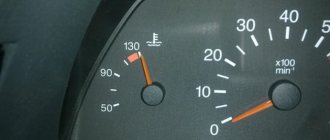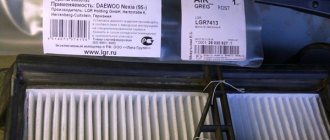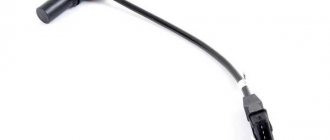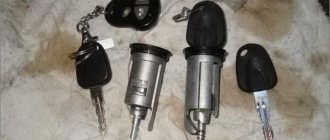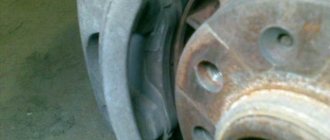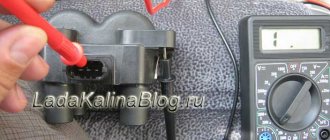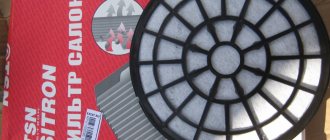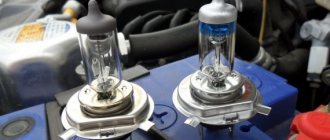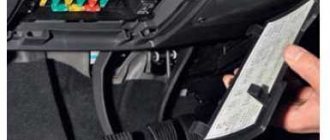Auto
3 years ago
Add a comment
- Olga
398 views
[adsp-pro-1]
Many owners have heard about the Daewoo Nexia car: this “workhorse” is always popular among those who want to buy an inexpensive car. Despite a number of shortcomings, many owners agree that its advantages outweigh them. Before purchasing, it is recommended to carefully study the reviews, read about the pros and cons, and also watch the video.
Some cars have gained particular popularity in Russia and the CIS countries due to the optimal combination of price and quality. One of these options was “Daewoo Nexia”.
Features of Daewoo Nexia engines
| Construction: what makes it special? |
| 8 valves; analogous to the C16NZ from Opel, but has different cylinder diameters, a different configuration of pistons and oil pump, and a different cylinder head layout; runs 200–250 thousand km. |
| 16 valves; 85 l. With.; 2 camshafts and ignition computer; lower fuel consumption compared to G15MF. |
| 89 l. With.; compliance with EURO-3 standards; The fuel system is built in the same way as on the Chevrolet Lanos. |
| 109 l. With.; structurally and externally similar to X14XE; there are hydraulic compensators, exhaust gas recirculation; EGR valve; Among the disadvantages is the short life of the lambda probe and problems with the functioning of the thermostat. |
For routine maintenance of 75 hp G15MF engines. s., A15MF for 90 l. s., F16D3 109 l. With. you will need 3.8 liters of oil. To extend the life of the Daewoo Nexia engine, you can use. This will allow you to restore worn surfaces, which are based on ferrous metals. A dense layer of metal-ceramics is formed on the parts, compression is normalized, noise and vibration levels are reduced, and fuel and oil consumption decreases. Daewoo Nexia consumes about 10 liters of gasoline per 100 km in the urban cycle. When the power unit wears out and there are problems with the fuel system, this figure increases by 2-3 liters. And thanks to complex treatment with a repair and restoration composition, it can be normalized.
If you are not sure about the quality of fuel at a gas station, use. It will increase the octane number by 3-5 units and save up to 10% of fuel. FuelEXx removes water from fuel, optimizes combustion processes, and promotes decarbonization of piston rings.
The combustion catalyst is very useful for the Daewoo Nexia with a 1.6-liter 1.6-liter engine:
Due to the low quality of Russian gasoline, the EGR valve in cars often fails and the recirculation system becomes coked.
Specifications
The following parameters have not changed:
- The length of the car is 4.5 meters, width – 1.6 meters, height reaches almost 1.4 meters, number of seats – 5 pieces, doors – 4;
- Ground clearance is 16 cm;
- Trunk volume is more than 500 liters;
- Battery capacity – 12 V;
- Engine 4-cylinder;
- 5-speed manual transmission, rack and pinion steering;
- Front-wheel drive, single-disc clutch, dry;
- The gas tank volume is 50 liters, the car consumes AI92;
- It has an independent front suspension and a semi-independent rear suspension, both spring;
- The front brakes are disc, the rear are drum.
Daewoo Nexia car interior
The updates affected the following parameters:
- Engine capacity increased by 100 cc. cm - from 1.5 thousand to 1.6 thousand, maximum power - from 80 hp. With. up to 109 l. With.;
- The number of valves has changed - from 8 to 16;
- Maximum torque increased from 3.2 thousand rpm to 4 thousand;
- Top speed increased by 10 km/h to 185 km/h;
- Acceleration to 100 km/h for “DONC” occurs in 11 seconds, “SOHC” accelerates in 12.5 seconds;
- But fuel consumption increased from 8.5 liters per 100 km in the city (7.7 liters outside the city) to 9.3 and 8.5 liters, respectively.
Understanding the Daewoo Nexia box
The most common remains the five-speed manual gearbox - a prototype developed by Opel. The oil in it should be changed every 80–90 thousand km, although the manufacturer does not mention this procedure; car owners and mechanics advise adhering to such regulations.
Over time, the main gear oil seal begins to leak, and on used cars the smoothness of shifting is often disrupted. To make gear shifting easier, change the drive rods and bushings (sold as a set). Additionally, the box can be treated with a friction geomodifier. This will restore the geometry of the gears, reduce the noise level and the amount of vibration, which is useful for transmissions of new and used Daewoo Nexia. in the gearbox, RVS-Master compensates for wear and forms a protective layer, and not a temporary film, unlike its competitors, which allows you to carry out repairs yourself without disassembling the gearbox and get rid of the hum.
Engine Nexia 8 valves
1.5 liter capacity has become one of the most popular on Daewoo Nexia in recent years. Today there are quite a few cars on the secondary market with this engine. 80 hp unit (A15 SMS), this is a naturally aspirated gasoline engine with distributed multipoint fuel injection with an ignition coil, which replaced the 1.5-liter G15 MF engine developing 75 hp. with an unreliable distributor.
Some tips for those who want to buy Daewoo Nexia
First of all, future car owners should adhere to the following rules:
- glass frames and rear wheel arches are characterized by rapid color changes;
- door locks break very often;
- side windows often warp, after which they begin to jam;
- the rear suspension springs require careful care, so do not overload the trunk;
- the engine runs normally even on 92 gasoline;
- It’s not very comfortable to be in the back, so you shouldn’t take more than three passengers on a long trip.
It will also be interesting: Opel Astra J 2011 on the secondary market
Nexia engine design 8 valves
The Nexia engine is a gasoline, four-stroke, four-cylinder, in-line, eight-valve, overhead camshaft. The location in the engine compartment is transverse. The operating order of the cylinders is: 1-3-4-2, counting from the auxiliary drive pulley. The power supply system is phased distributed fuel injection (Euro-3 toxicity standards). The engine has a cast iron cylinder block.
The engine, gearbox and clutch form the power unit - a single unit mounted in the engine compartment on three elastic rubber-metal supports. The right support is attached to a bracket located on the front wall of the cylinder block, and the left and rear ones are attached to the gearbox housing.
Nexia engine cylinder head 8 valves
The Nexia 8 valve cylinder head is cast from aluminum alloy, common to all four cylinders. The head is centered on the block with two bushings and secured with ten bolts. A sealing gasket is installed between the block and the cylinder head.
The intake and exhaust ports are located on opposite sides of the cylinder head. Valve seats and guides are pressed into the cylinder head. The valve closes under the action of a single spring. Its lower end rests on the washer, and its upper end rests on a plate held by two crackers. The crackers folded together have the shape of a truncated cone, and on their inner surface there are beads that fit into the grooves on the valve stem. The valves are driven by the camshaft. The camshaft is cast iron and rotates on five supports (bearings) in an aluminum bearing housing, which is attached to the top of the cylinder head.
Timing drive of Nexia engine 8 valves
The camshaft of the Nexia's 8-valve engine is driven by a toothed belt from the crankshaft. The valves are actuated by the camshaft cams through pressure levers, which rest on the hydraulic lash compensators with one shoulder, and on the valve stems with the other shoulder through guide washers. The engine has hydraulic compensators
, which are self-adjusting support levers. Under the influence of oil filling the internal cavity of the compensator under pressure, the compensator plunger selects a gap in the valve drive. The use of hydraulic compensators in the valve drive reduces the noise of the gas distribution mechanism and also eliminates its maintenance.
If the belt breaks, the valve bends!
Among other features, it can be noted that the timing belt rotates the pump (water pump). The belt is replaced every 60 thousand kilometers, the pump must be changed every 120 thousand kilometers. Please note that on the old 8-valve engine with 75 hp. The timing belt generally changes every 40 thousand kilometers.
Technical characteristics of the Nexia engine 8 valves 80 hp.
- Working volume – 1498 cm3
- Number of cylinders – 4
- Number of valves – 8
- Cylinder diameter – 76.5 mm
- Piston stroke – 81.5 mm
- Timing drive - belt
- Power hp – 80 at 5600 rpm. per minute
- Torque – 123 Nm at 3200 rpm. per minute
- Maximum speed – 175 km/h
- Acceleration to the first hundred – 12.5 seconds
- Fuel type – gasoline AI-92
- Fuel consumption in the city – 8.5 liters
- Fuel consumption in the combined cycle – 8 liters
- Fuel consumption on the highway – 7.7 liters
A fairly reliable and unpretentious engine, the main thing is to change the oil, timing belt, and pump on time. A completely repairable power unit.
The Daewoo Nexia car in Russia at one time gained extraordinary popularity, but these cars can still be constantly seen on the roads of our country.
This brand has long been the best-selling brand in the Russian Federation, and Nexia is still in good demand.
Motor Features
The 1.5 liter version is distinguished by its high reliability, especially after modernization. Instead of the usual distributor, there is a special electronic module, which solves a number of problems associated with cold starting of engines. In addition, the likelihood of timing belt breakage is minimized. However, sometimes the valves themselves become bent, leading to the need for major repairs. You can avoid such a malfunction if you systematically change the timing belt (this needs to be done every 60 thousand kilometers).
The problem can also arise with the water pump, so it is important to monitor the functioning of this element. It is advisable to change the pump every 120 thousand kilometers. The part is not so expensive that you waste money. But if operated with a worn pump, serious problems may arise.
If we talk about the 1.6-liter engine, then the main problem here may lie in the use of low-quality fuel. In this case, the valves begin to clog, so that they jam. There is nothing you can do about it, you will have to do some repairs. Quite often, such engines were produced defective, so that it was necessary to buy a new radiator tank. Defects also occur with the mass air flow sensor.
It will also be interesting: Lada Vesta Cross: 1.8 engine (21179) and its technical characteristics
A little history of Daewoo Nexia
The ancestor of the Daewoo Nexia car was the well-known Opel Cadet E, which was produced by a German company from 1984 to 1991. At first, Nexia was produced in Korea under the name Daewoo Racer, and its production continued until 1995. For some time, large-scale assembly of the Nexia was carried out in Krasny Askai, Rostov region, but in 1998, production of the car was discontinued.
The main production of Daewoo Nexia was established in Uzbekistan in the city of Asaka, the first cars rolled off the assembly line in 1996. Almost immediately the car began to be exported to Russia, and in 2008 Nexia underwent a slight restyling:
- new headlights appeared;
- bumpers changed;
- the trunk lid has become different;
- The rear lights have been changed.
There were still very minor external changes, but overall the car remained recognizable and differed only slightly from the pre-restyling Nexia.
The first Uzbek Nexias came in two trim levels:
- GL – basic version;
- GLE is the luxury version.
The basic equipment was very simple, sometimes it did not even include power steering. In the GLE version, the car was equipped with additional options:
- electric windows;
- hydraulic power steering;
- air conditioning;
- fog lights;
- electric antenna.
At first, the Daewoo Nexia powertrain lineup included a single 1.5-liter gasoline engine. The engine had a power of 75 hp. pp., in-line arrangement of four cylinders.
The G15MF engine is an 8-valve engine, with one intake and exhaust valve per cylinder; in many ways it is very similar to Opel’s C16NZ internal combustion engine. Despite the apparent external similarity, Opel and Nexia engines have significant differences, and on the G15MF engine:
- the cylinder diameter is different, respectively, the pistons have a completely different configuration and dimensions;
- another casting was made on the crankshaft to drive the oil pump;
- The oil pump itself has a different drive configuration;
- in the cylinder head, instead of a plug at the back, a metal fitting is pressed into place under the cooling system pipe; in addition, the cylinder head has slightly different combustion chambers.
There are also a number of design differences that do not allow the installation of parts from the C16NZ engine on the G15MF engine. In particular, Nexia has its own distributor, and it does not fit any Opel.
The Daewoo Nexia 1.5 engine has the following characteristics:
- fuel system type – distributed injection;
- location on the car – transverse;
- volume – 1498 cm³;
- number of valves – 8;
- cylinder diameter – 76.5 mm;
- piston stroke – 81.5 mm;
- diameter of crankshaft journals – 55 mm;
- diameter of connecting rod journals – 43 mm.
Despite the fact that the Daewoo Nexia 1.5 engine has 8 valves, a car with it can develop quite a decent speed (up to 175 km/h) and accelerate to 100 kilometers in 12.5 seconds. In city mode, fuel consumption with the G15MF engine averages 9.3 liters per 100 kilometers, on the highway outside the city - 7 l/100 km, and during dynamic driving, gasoline consumption increases.
The Nexia 8-valve engine is very reliable, and if you care for it properly (do not overheat, do not overload, change the engine oil on time), then the engine can travel more than 200 thousand kilometers without major repairs. It should be noted that some car owners did not spare the engine in their car at all:
- they poured the cheapest surrogate oil into it;
- forgot to change the oil on time;
- did not check the oil level in the crankcase.
If you remove the oil filler cap from such a “dead” engine, you can immediately see blackness on the camshaft, which is formed from low-quality oil. However, even such motors miraculously survived, and this shows how reliable they are.
In 2002, some changes were made to the Daewoo Nexia, although it is difficult to call them restyling. But the most important novelty of this year is the appearance in the line of power units of a new 16-valve A15MF engine with a volume of 1.5 liters and a power of 85 hp. With.
The main difference between this engine and the 8-valve engine is a completely different cylinder head, in which two camshafts are installed. The power unit no longer has a distributor; the ignition is controlled by an electronic unit. The cylinder diameter remained the same, but the pistons changed - four grooves for the valves appeared on the bottom. To be honest, the grooves on the pistons do not play a special role - if the timing belt breaks, the valves bend. The 8-valve internal combustion engine G15MF remains the winner in this regard; a broken timing belt on it does not cause damage to the engine.
As for the crankshaft, it remains the same; the interchangeability of the A15MF and G15MF crankshafts is complete. Also, the changes did not affect the oil pump, engine sump, flywheel and clutch. Due to the installation of a more advanced ignition system on the Nexia with a 16-valve engine, fuel consumption has decreased slightly:
- in the urban cycle – 9.3 l/100 km;
- on the highway outside the city - 6.5 l/100 km.
Typical problems and malfunctions of a used Daewoo Nexia
The advantages and disadvantages of the Daewoo Nexia model in owner reviews can be found in large numbers on thematic forums. Where the owners of this car discuss problems, malfunctions and solutions. Owners of Daewoo Nexia do not place excessive demands on the comfort and power characteristics of the car, realizing that the design was outdated even in the years of production. They are quite satisfied with the car's spaciousness, large trunk, acceptable fuel consumption, and the engine's unpretentiousness to gasoline.
The elastic chassis, ease of control, and reliable manual transmission are well rated. In cold weather, the Nexia starts well, and there are no complaints about the interior heating. The visibility of the side mirrors, the adjustable operating interval of the wipers, and the familiar full-size spare wheel are pleasing. The owners consider the main advantages of the car to be reliability, maintainability, availability of spare parts, and their reasonable cost.
The car is not adapted to high speeds on the highway - the dynamics at high speeds and rolls in corners are let down. For tall people, it is inconvenient to sit in the driver's seat, which is quite cramped. The small ground clearance of the Daewoo Nexia is inconvenient for deep holes, country roads, and snow drifts. The same complaints are made about the long front bumper and its low overhang. The design shortcomings of the Nexia include the inability to fold out the seats, poor low beam (with good high beam), a partition between the trunk and the passenger compartment, and very approximate readings of the fuel level indicator. A running air conditioner takes too much engine power.
Typical failures include failures of door locks, air conditioning, and radiator leaks. Most often, owners replace chassis elements (especially wheel bearings), engine head gaskets, and electrical wiring. Good galvanization of the body is only available on Korean and Russian-assembled cars. Uzbek versions begin to rust even from minor chips and require constant monitoring and regular anti-corrosion treatment.
New engines for 2008
In 2008, in addition to external changes to the body, the Daewoo Nexia updated its engine range:
- Instead of the obsolete G15MF engine, the A15SMS internal combustion engine was installed. This power unit uses a fuel system from Chevrolet Lanos, the engine now meets Euro-3 environmental standards;
- The 16 valve A15MF 1.5 liter engine was replaced by a new internal combustion engine model F16D3, with a volume of 1.6 liters.
The A15SMS engine has become “stronger” than its predecessor, its power has increased to 89 hp. s., but it also has one “fat” minus - due to the fact that the cylinder head of the new engine is installed from a Lanos, if the timing belt breaks, the valves now “meet” the pistons.
Since 2008, the Daewoo Nexia has been equipped with a new 16-valve F16D3 engine that meets Euro 3 and 4 environmental requirements; this engine first appeared on the Chevrolet Lacetti. The Chevrolet Cruze model was also equipped with the F16D3 engine; the prototype of the engine was the Opel X14XE power unit. Although the volumes of these engines are different, structurally and externally they are very similar to each other. Both engines have:
- timing belt drive;
- hydraulic compensators;
- two camshafts;
- exhaust gas recirculation system.
The F16D3 gasoline engine has the following technical characteristics:
- number/location of cylinders – four, in-line;
- volume – 1598 cm³;
- power – 109 hp;
- fuel system - distributed injection;
- compression ratio in cylinders – 9.5;
- cylinder diameter – 79 mm;
- piston stroke – 81.5 mm.
To reduce the toxicity of exhaust gases, an EGR valve is installed on this engine, but the recirculation system often becomes coked from Russian gasoline, and many car owners turn off this valve. The F16D3 engine is not only similar to the X14XE, it also adopted all the diseases from the Opel power unit:
- rapid failure of the lambda probe (also due to low-quality fuel);
- oil leak from the valve cover;
- problems with the thermostat opening earlier than it should.
The leak would not cause much trouble if the oil did not flow into the spark plug wells. Penetrating into the well, the oil hits the electrodes of the spark plug, and the internal combustion engine begins to throttle. But the Daewoo Nexia 1.6 engine rarely consumes oil through the piston rings; in this regard, the engine is reliable.
Like any other car, Daewoo Nexia needs maintenance, and the engine oil must be changed according to the established regulations. The frequency of oil changes on Nexia engines is generally the same as on other passenger car models - every 10 thousand kilometers. If operating conditions are severe (high loads, work in hot climates), it is recommended to change the oil after 5 thousand km.
The requirements for engine oils on the Nexia are standard; no special conditions are imposed on them. To prevent the oil from burning and blackness forming on the parts inside the engine, it must be of high quality, with good additives. It is not recommended to pour mineral oil into engines; it is better to use “synthetic” or “semi-synthetic”.
For winter motor oil, the viscosity should be lower; according to the SAE classification, for frosty winters it is good to use brands 5W30, 0W30, 5W40, 0W40. When starting in cold weather, thick motor oil causes intense wear of engine parts and reduces engine life, so all-season oil should not be used for internal combustion engines in winter.
It is recommended to fill in almost any oil from well-known world manufacturers, the main thing is that it is not a fake. Oil from the following companies is often used in Daewoo Nexia engines:
- Castrol;
- Mobil;
- Chevron;
It has long been proven that it is counterfeit oil that causes the formation of soot and a reduction in engine life. The secret here is very simple - the fake does not contain those high-quality additives that have the necessary lubricating properties and reduce friction between rubbing parts.
If “synthetics” turn out to be too expensive for the car owner, you can replace it with semi-synthetic oil, no big trouble will happen. But when replacing synthetic oil with “semi-synthetic”, it is necessary to thoroughly flush the oil system before pouring new oil into the Daewoo Nexia engine.
The F16D3 engine began to be installed on the Nexia after 2008. Nexia with this engine has become very dynamic, because the engine has a volume of 1.6 and 16 valves. In Daewoo this engine is called DOHC.
Initially, the engine was labeled F14D3 with a volume of only 1.4 liters. After modernization at the GM plant, the “F16D3” engine and its subsequent modifications were born. In turn, the F14D3 is a continuation of Opel’s Z16XE engine (2001), everything is interchangeable with this engine. The next and last modification of the F16D4 engine - phase regulators were added to it and boosted; it has a volume of 125 horsepower versus 109 horsepower on its predecessor.
Technical characteristics of the F16D3 engine from Daewoo Nexia
The approximate engine life is 220 - 250 thousand kilometers. In fact, this motor is considered one of the million-dollar engines; it all depends on the maintenance of the motor, as well as on its operating conditions.
It is worth noting that if the timing belt breaks on this engine, the valves will bend. When a valve breaks, the pistons collide and the higher the crankshaft speed at this moment, the greater the damage.
The engine is installed - Chevrolet Cruze, Daewoo Lanos, Chevrolet Lanos, Daewoo Nexia, Chevrolet Aveo, Chevrolet Lacetti, Daewoo Lacetti, ZAZ Chance, Chevrolet Nexia. A power of 109 horsepower very quickly accelerates such a light car as the Daewoo Nexia.
Typical faults of the F16D3 engine on Nexia
The F16D3 engine is equipped with a USR valve - exhaust gas recirculation system. The exhaust gases re-enter the intake tract and burn out. This was done to reduce toxicity standards, but because of this, the oil loses its properties faster and carbon deposits form on the valves. The engine essentially breathes its own exhaust. For Nexia, we wrote how to turn off the USR valve, but these instructions will also help other owners of this engine. Also, this valve itself quickly becomes clogged from low-quality fuel and clogs the engine, so we recommend turning it off.
Also, a typical problem with this engine is oil leakage from under the valve cover (cylinder head cover). We also already wrote how to eliminate oil leaks from under the valve cover on a Nexia.
If there is a lack of oil, valves and hydraulic compensators begin to click. If you put a load on with no oil, the engine can be sent to the trash heap.
Rules
Upon delivery, you will be given all the necessary documents for the purchase: invoice, cash receipt. When making a purchase for an organization, you will be given the originals of the invoice and invoice, as well as the invoice, in which you must put the seal of your organization and the signature of the responsible person. The price indicated in the documents sent to you by the courier is final; the courier does not have the right to adjust the price. Delivery costs are shown as a separate line item in purchase documents.
Attention!
We ask you to remember that all technical parameters, consumer properties, and, most importantly, the applicability of the purchased spare parts specifically to your car, you should check with our manager before purchasing the product! The duties of the Delivery Service employees do not include consultations and comments regarding the applicability of spare parts and methods of their installation. Upon receipt of the ordered goods delivered to you, please check in the presence of the courier: the completeness of the delivered goods, absence of damage to body parts, chips and cracks on the glass, compliance of the delivered goods with the description on our website. If you do not file claims for mechanical damage upon receipt of the goods, such claims will not be considered in the future. In case of questions, wishes and complaints, please contact us at the following coordinates:
Our phones
,
F16D3 engine tuning
We devoted a whole section to tuning on Nexia. To increase the amount of horsepower, it is necessary to flash the engine, but the firmware only gives 5-8 hp. To get a significant increase, you need to install a 4-2-1 spider. The new release increases horsepower to 125.
The simplest and most effective way to improve car dynamics and reduce consumption is to remove the catalyst and change the exhaust. The catalyst and standard exhaust severely choke the engine and prevent it from working at normal speed. This is the most affordable type of tuning.
We never asked much from this car. Nexia was attractive due to its low price and good reliability. It must be said that the first generation of “Ksyusha” (as this car was popularly called) more or less justified the trust placed in it. The car survived its first 100 thousand, as a rule, without any problems. In mid-2008, the plant presented an updated model - Nexia N150. Now, almost 3 years later, we decided to summarize all the sores and problem areas of the updated model...
Drawing conclusions
Thus, Daewoo Nexia is a fairly good car, which is in particular demand in the secondary market. In principle, this is explained by the affordable price and good performance characteristics of the model. If you decide to purchase a car on the secondary market, you should pay special attention to the condition of the main components of the car. Above we described the most common problems that occur with used cars of this type. We hope our tips will help you choose a good vehicle for yourself. Which will serve faithfully for many years.
And then a video review about the Daewoo Nexia:
Engines
Nexia buyers can choose from two engines. The 1.5-liter eight-valve engine (80 hp) is accompanied by a relatively modern 16-valve engine with a volume of 1.6 liters and a power of 109 hp. Both comply with Euro 3 standards and are not fast. This is especially true for the 1.5-liter unit.
Motors are oil eaters. However, this largely depends on operating conditions and driving style. Consumption of 300 g per thousand km is considered normal for them. Under our operating conditions, it is better not to forget about the oil level in the intervals between scheduled service visits. Speaking of maintenance. In 2010, new maintenance regulations were developed. Previously, the so-called zero maintenance had to be completed after a thousand kilometers, but now the service interval has increased to two thousand. Scheduled maintenance visits are required to be made at intervals of 10 thousand kilometers or once a year, and not every six months, as was previously the case. Violation of service rules leads to loss of warranty, in fact, like with any automaker.
Note that, according to the new regulations, the warranty for Nexia is 3 years or 100 thousand km.
Maintenance is prescribed scrupulously and quite extensively. Thus, TO-3 (20 thousand kilometers) involves changing the oil, air and fuel filters, and spark plugs. Together with original components, a service visit will cost about 8 thousand rubles. (work - up to 2 thousand rubles, parts - about 6 thousand rubles). A little expensive, of course, but under the hood they will update you with a lot of things.
The timing kit on both engines is changed every 40 thousand kilometers (TO-5). On an eight-valve engine, a tensioner pulley is included with the belt. The timing structure of a 1.6-liter engine with 16 valves is more complex. In addition to the belt, it includes an automatic tensioner roller and a support roller.
The “sweating” of the 1.5-liter engine is the talk of the town! Oil regularly leaks from under the valve cover and cylinder head gaskets. Replacing the gaskets helps for a couple of thousand km at best. One way to eliminate “excess” oil is to install a valve cover from a Chevrolet Lanos. Another is washing the engine at every service. The procedure will cost 300 rubles, but under the hood it will always be clean.
Transmission
It was on the Nexia in the new body that the clutch for some reason began to look thoughtful. To switch on a particular gear without any problems, you need to wait a 3-second pause. Agree, in city traffic conditions this is not the most pleasant feature.
There was a period when fairly thin oil was poured into the gearbox at the factory. It heated up very quickly, losing its viscosity. The first symptom is knocking in the gearbox when the clutch pedal is operated suddenly. Experts recommended not waiting for the second and third symptoms, but simply pouring time-tested semi-synthetics into the box.
Today the plant has corrected itself: they began to pour SAEW80W-90 specification fluid into the gearbox, with a viscosity level more suitable for operation in summer conditions. In the Vehicle Operation Manual, the manufacturer recommends using less viscous oil of the SAEW75W-90 specification in winter conditions.
As for the frequency of oil changes in manual transmissions, it is 120 thousand km. The clutch lasts about 80 thousand km. CV joints run about 50–60 thousand km.
Electrical equipment
At first, a lot of complaints were caused by the Check Engine light, which suddenly came on and did not go out, despite any tricks. Let us reassure you right away - as a rule, there is nothing criminal, the reason is a controller glitch. The controller simply “did not see” the engine crankshaft position sensor (error P13360). It could only be cured at the dealer, and often by replacing the controller itself. By the beginning of 2009, the plant had overcome the problem. If you get a Check Engine light today, it's most likely due to low-quality gasoline.
Relays, sensors and other electrical devices are manufactured in various parts of our planet, from Kaluga and Pskov to India. Alas, at first they could not boast of either quality or maintainability. Thus, the instrument cluster, made in India, suffered from “stuck” arrows. A phantom malfunction sometimes appeared on both the new Nexia and on a car that had run more than tens of thousands of km. This did not change the essence of the matter: we had to wait at least two to three months for the “socket”. In 2009, complaints about Indian devices reached a critical mass, and at the urgent request of the manufacturer, the Indians finally got down to business. As a result, by 2010, cases of freezing became rare.
Our delivery cost
The cost of delivery of spare parts from our store in Moscow (within the Moscow Ring Road) is 500 rubles
. (attention: delivery is possible if the order amount is at least 2000 rubles), but at the same time, our store cannot guarantee delivery. .
But if the purchase amount has reached 5,000 rubles, then delivery within Moscow will be FREE!
Delivery to the Moscow region is also possible, but by prior arrangement and at a “negotiable” price.
Chassis and body
Ball joints and shock absorbers are not very tolerant of road potholes. Active off-road driving will reduce their service life by almost half - somewhere up to 60 thousand km.
The front brake pads last about 60 thousand km, the discs are replaced every second pad replacement. Rear drum pads last up to 120 thousand km.
Increasingly, specialists at dealership technical centers are paying attention to the deterioration of the quality of the paintwork. Today, cars with shagreen, unpainted, and different colors are the order of the day. But this is a problem not so much for Nexia, but for all automakers in this segment.
But the low quality of sealing the joints of body panels, alas, is a feature of Ksyusha. It happened that during heavy rain, water seeped into the interior and trunk. The same thing happened with glass seals.
